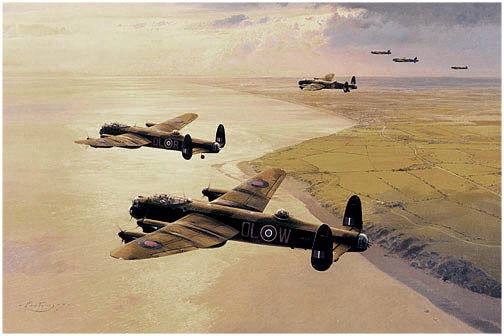Regards, Ivan

Posted on 02/06/2003 4:23:09 PM PST by MadIvan
The final component of Britains expeditionary force boosts the total of troops ready for action to 40,000
A THIRD of the RAF’s frontline combat jets are to be involved in an American-led airstrike campaign against Iraq, defence officials said yesterday.
Dozens of bombers and fighter aircraft based at RAF stations around the country are to leave for the Gulf immediately. Geoff Hoon, the Defence Secretary, announced the make-up of the RAF contribution to Operation Telic, the British codename for the war deployments, in a statement to the Commons yesterday.
It represented the final component of Britain’s tri-Service military expeditionary force for the Gulf, following the previous announcements about Royal Navy, Royal Marine and Army deployments.
The total number of servicemen and women, regulars and reservists assigned for duties has now reached 40,000, approaching the size of the force which took part in the 1991 Gulf War.
The airpower “package” committed yesterday to a possible war with Baghdad consists of about 100 aircraft and 8,000 personnel. That includes the 25 aircraft and 1,130 personnel already based in the region enforcing the no-fly zones over northern and southern Iraq.
The reinforcement aircraft are likely to be based in Kuwait and at Incirlik in Turkey, although defence officials were being coy about their ultimate destinations “for operational reasons”.
Two-thirds of the aircraft, about 75, will be fast jets: Tornado GR4, Harrier GR7 and Jaguar bombers, and Tornado F3 air defence aircraft. In the 1991 war the RAF had 87 frontline combat aircraft engaged in airstrikes and air defence missions. The RAF is also sending 27 Puma and Chinook helicopters with air crews totalling 1,100. The twin-rotor Chinook can carry 54 troops or ten tons of stores. The Puma can carry 16 troops. All the helicopters come from the tri-Service Joint Helicopter Command and are flown by pilots from all three services.
Mr Hoon said in his statement: “This represents a very substantial contribution by the RAF to the building of a credible threat of force in support of the (Government’s) policy objectives.”
“This may tempt some people into speculation about the likelihood or timing of military action,” he added. “But it is still possible for Saddam Hussein to change his behaviour, co-operate actively with the weapons inspectors, and disarm by peaceful means.”
Despite Mr Hoon’s note of caution, the departure of more RAF bombers to the Gulf was the clearest indication that Service chiefs want everything in place before the end of this month, to be in a position to start the campaign as soon as President Bush gives the green light.
A senior defence official said that the “vast majority” of missiles and bombs being deployed to the Gulf would be “smart” weapons, guided to their targets, either by the satellite-linked Global Positioning System or by lasers, or with the help of a TV monitor in the cockpit. In the 1991 Gulf War, most of the bombs dropped were “dumb” — unguided and left to free-fall to their targets.
The official indicated, however, that the RAF bomber crews would have to do without the latest weapon systems which have been ordered for the RAF but are still under development. He said that the Storm Shadow cruise missile and Brimstone anti-armour system were “not yet in the RAF inventory”.
The weapons on the “smart” list include an enhanced Paveway missile which uses GPS for guidance; Maverick antiarmour system which has an imaging infra-red seeker head allowing it to be fired day or night; and the new air-to-air missile, Asraam, a high-speed heat-seeking weapon.
Every possible type of RAF aircraft will be involved, including TriStar and VC10 tankers and E3D Sentry early warning Awacs. The package announced yesterday also includes the deployment of most of the RAF Regiment, who will guard aircraft bases.
Regards, Ivan

You can try at www.mod.gov.uk - I am not sure if they release that information, darling.
Love, Ivan
Regards
I agree entirely. The MOD may want to help you given this purpose.
Love, Ivan

Lancasters of 83 Sqdn. Pathfinders depart the English coast late on 17th. August 1943. On this night, a total of 596 Bomber Command aircraft attacked and almost completely destroyed the secret research establishment at Peenemunde, where Hitler's V-1 and V-2 "Vengance" weapons were being developed.
Saddam's Navy had better watch out, too!

Blenheim light bombers make a dawn attack on German shipping in Greece, Dec. 14, 1941. Ivor Broom was one of the few Blenheim pilots to survive this "Dangerous Duty".

Disclaimer: Opinions posted on Free Republic are those of the individual posters and do not necessarily represent the opinion of Free Republic or its management. All materials posted herein are protected by copyright law and the exemption for fair use of copyrighted works.